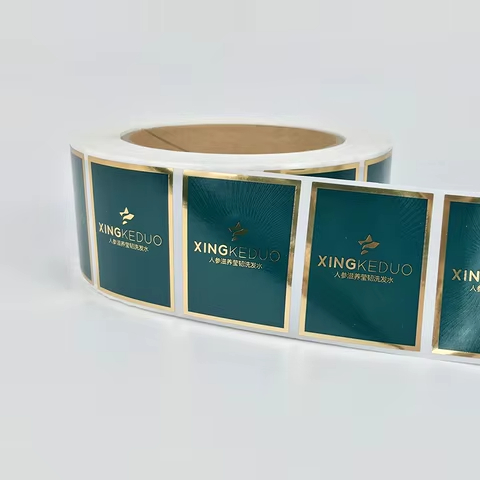Hot stamping is one of the most important label finishing processes in the self-adhesive label industry. It enhances visual appeal, increases product value, and strengthens anti-counterfeiting performance. This article provides a comprehensive introduction to the hot stamping process for self-adhesive labels, covering different machine platforms, hot stamping methods, and application scenarios. It also includes cold stamping, rotary hot stamping, and flatbed hot stamping, offering a practical guide for label manufacturers and printing companies.
1. Overview of Hot Stamping for Self-Adhesive Labels
In self-adhesive label printing, hot stamping (also called foil stamping) is widely used for premium products such as cosmetics, wine labels, food packaging, electronic labels, and premium gift boxes.
Compared to standard printing, hot stamping adds metallic effects, increases brand recognition, and improves shelf appeal.
Based on the processing method, hot stamping can be divided into:
- Sheet-fed hot stamping
- Roll-fed hot stamping
Among these, roll-fed hot stamping is the most widely used method in label printing.
2. Types of Hot Stamping Processes in Self-Adhesive Label Printin
A. Flatbed Hot Stamping on Label Printing Machines
Flatbed hot stamping is a classic method used on label printing presses.
Because roll materials feed intermittently, the hot stamping action is completed using a flat plate structure, similar to traditional flatbed machines.
Features:
- High pressure, suitable for fine graphics
- Suitable for small- and medium-volume label production
- Stable hot foil effect
Flatbed hot stamping is widely used for cosmetic labels, wine labels, pharmaceutical labels, etc.

B. Multi-station Flatbed Hot Stamping
Some advanced label printing equipment is equipped with two or more hot stamping units, enabling:
- Horizontal hot stamping
- Vertical hot stamping
- Two-color hot stamping at the same time
This method is ideal for premium labels, luxury packaging, and complex designs needing multiple foil colors (gold, silver, rose gold, holographic foil, etc.).
C. Flatbed Hot Stamping on Label Finishing Machines
Label finishing machines (processing machines) are used to handle printed or unprinted roll labels.
Hot stamping is one of their core functions, and the device typically adopts a flatbed hot stamping system.
Advantages:
- Suitable for non-printing hot stamping
- Flexible for small runs
- Common in label converting workflows
D. Rotary Hot Stamping on Rotary Presses
Rotary hot stamping uses a cylindrical hot stamping plate, performing continuous foil stamping during rotation.
Advantages of rotary hot stamping:
- Much faster than flatbed
- Suitable for large-volume production
- Excellent for high-speed flexographic presses
Requirements:
- Stable paper feeding
- High alignment precision
Rotary foil stamping is widely used in mass-production food labels, beverage labels, daily chemical labels, etc.

E. Cold Foil Stamping on Rotary Presses (Cold Stamping)
Cold stamping is a new-generation foil process that does not require heating.
Instead, it uses UV-curable adhesive to transfer metallic foil.
Cold Foil Stamping Process:
- Print UV adhesive on the foil stamping area
- UV-dry adhesive
- Laminate cold foil
- Peel foil → metallic effect is formed
Advantages:
- Lower cost compared to hot foil stamping
- Higher production efficiency
- No need for heated plates
- Compatible with existing flexo presses & rotary presses
- Suitable for fine patterns & gradient foil effects
Cold stamping is increasingly used in cosmetic labels, beverage labels, variable-data labels, and fast-turnover SKUs.


